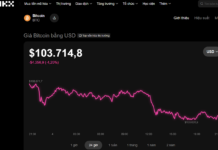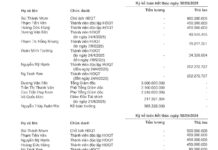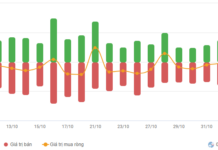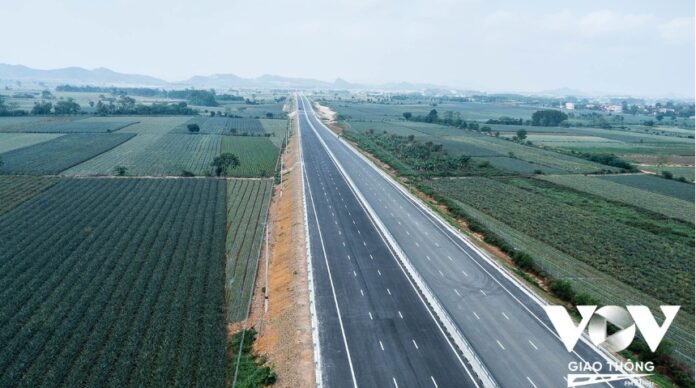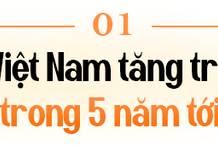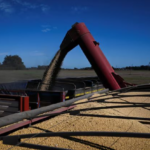The following is a discussion between a reporter from VOV Traffic Radio and Mr. Dinh Cao Thang, Head of Finance at the Vietnam Road Administration, regarding the proposed toll fees for state-invested expressways and concerns about potential overlapping charges.
Reporter: Please explain the basis for the proposed toll fees in the Draft Decree regulating toll charges for state-invested expressways.
Mr. Dinh Cao Thang: The Law on Roads, enacted by the National Assembly, includes provisions for collecting tolls on expressways. Understanding the potential impact on road users, the drafting agency collaborated with specialized agencies during the research and determination of the toll rates. Notably, the principle of ensuring reasonable rates that harmonize with toll rates for roads and expressways developed through public-private partnerships (PPPs) was taken into account.
Additionally, the rates must be compatible with the interests and payment capabilities of users. After covering collection costs, the remaining revenue should be returned to the state budget.
Tolls collected from expressways funded by the state budget will be returned to the state budget and prioritized for investment, management, and maintenance of road infrastructure.
The proposed rates are based on calculations and analyses of vehicle owners’ benefits when traveling on expressways. Three scenarios were considered: a low rate based on 50% of user benefits, a medium rate based on 60%, and a high rate based on 70%.

The Vietnam Road Administration has proposed adopting the high rate (level 1, corresponding to approximately 70% of user benefits, or about 1,300 VND/vehicle-km for standard vehicles) for expressways designed and constructed according to expressway standards and relevant technical regulations.
Simultaneously, the low rate (level 2, corresponding to approximately 50% of user benefits, or about 900 VND/vehicle-km for standard vehicles) is suggested for expressways that received investment approval before the Law on Roads took effect and do not fully comply with its provisions. This rate is 50-65% of the toll rates currently applied on BOT expressways and those managed by VEC.
Reporter: Many transport businesses argue that they already bear numerous charges, including road maintenance fees. Could this toll collection lead to overlapping fees?
Mr. Dinh Cao Thang: As mentioned earlier, the rates have been calculated by specialized agencies, taking into account the exclusion of various taxes and fees, including vehicle-based road usage fees. Moreover, all state-invested expressways have parallel national highways, providing road users with a choice between traveling on the existing national highways or paying tolls to use the expressways and enjoy higher-quality services and benefits.
The expressway toll rates are determined based on the principle of matching the quality of service and not exceeding the benefits derived from using the expressway compared to ordinary national highways, while also considering the payment capabilities of expressway users.
The Vietnam Road Administration will enhance communication and explanation to help road users understand that the toll collection on state-invested expressways does not result in overlapping charges.

Reporter: Can you elaborate on how the toll collection on state-invested expressways will contribute to reinvestment in road infrastructure projects and the maintenance of expressways in the future?
Mr. Dinh Cao Thang: With the proposed toll rates, it is anticipated that the collection from the operational expressways will reach 3,210 billion VND per year, with 2,850-2,900 billion VND being contributed to the state budget. In the next ten years, the capital demand for new expressway projects is expected to reach nearly 240,000 billion VND, while maintenance funding can only meet about 40% of this requirement.
Delayed or insufficient allocation of funds for the management and operation of expressways will significantly impact the exploitation of these routes. Collecting these tolls will provide valuable resources for the state to maintain existing expressways and invest in new projects, thereby enhancing infrastructure quality and ensuring that the services provided align with the toll rates charged on expressways.
Furthermore, with the current diversity and volume of vehicles and transportation forms, implementing toll collection on expressways will help regulate vehicle flow, reduce traffic density, improve road safety, extend the lifespan of expressway infrastructure, and decrease maintenance costs for both expressways and parallel national highways.
Reporter: Thank you for your insights, Mr. Thang!








